You’ve heard the story before; the story of a wristwatch designed in 1931 that could survive a game of polo. That wristwatch was the original Reverso. For the longest time, the Reverso was time-only – no complications. In fact, it wasn’t until 1990 – as the 60th anniversary coincided with a renewed interest in mechanical watchmaking after the quartz crisis – that complicated Reverso watches became reality. In 1993, a significant milestone in Jaeger-LeCoultre’s rich history was achieved: the brand introduced its first tourbillon wristwatch ever, and it was a Reverso.
Jaeger-LeCoultre Reverso Tribute Duoface Tourbillon in Pink Gold
This year, Jaeger-LeCoultre celebrates thirty years since that momentous step forward. It was only fitting, then, that the brand chose the Reverso Tribute Duoface Tourbillon for the occasion. If you thought the name sounded familiar, you thought right. This is not a brand new model. The Reverso Tribute Duoface Tourbillon first debuted in 2018 to mark a different event: the brand’s 185th anniversary. This time, however, the watch is rendered in pink gold (as opposed to platinum) and is a touch more ornate. Here, we bring you the details and our honest thoughts on the new Reverso Tribute Duoface Tourbillon in pink gold.
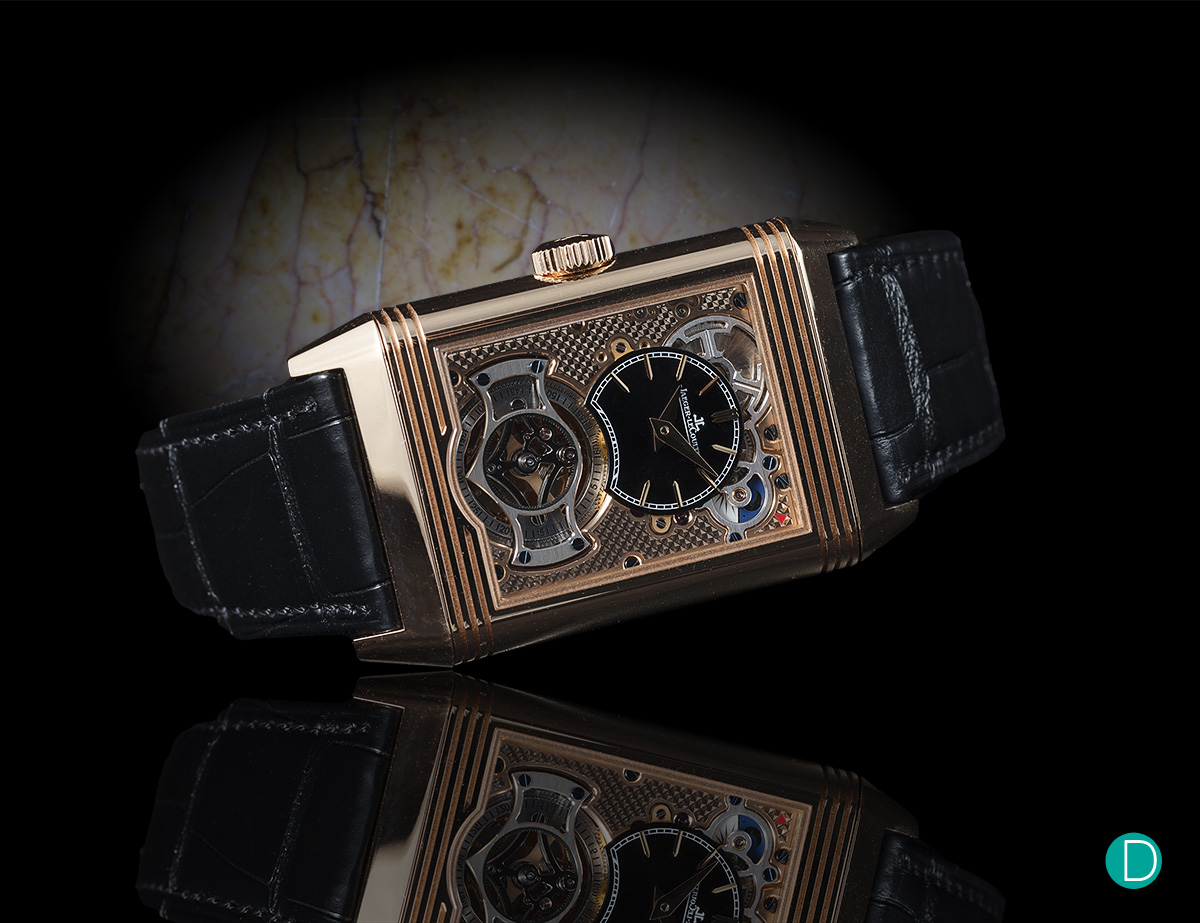
The Case, Dial, and Hands
The case of the new Reverso Tribute Duoface Tourbillon measures 45.5 mm x 27.4 mm. It’s not exactly small but it is fairly thin for what it packs, at only 9.15 mm in height. Characteristic of every Reverso watch, the clean Art Deco lines of the case lends an air of deceptive simplicity when in fact it is one of watchmaking’s most complex cases, with more than 50 components including the patented slide-and-swivel mechanism that connects the case to its cradle. Previously released in platinum, the new Reverso Tribute Duoface Tourbillon is rendered in pink gold, giving it a much warmer aura than its predecessor.
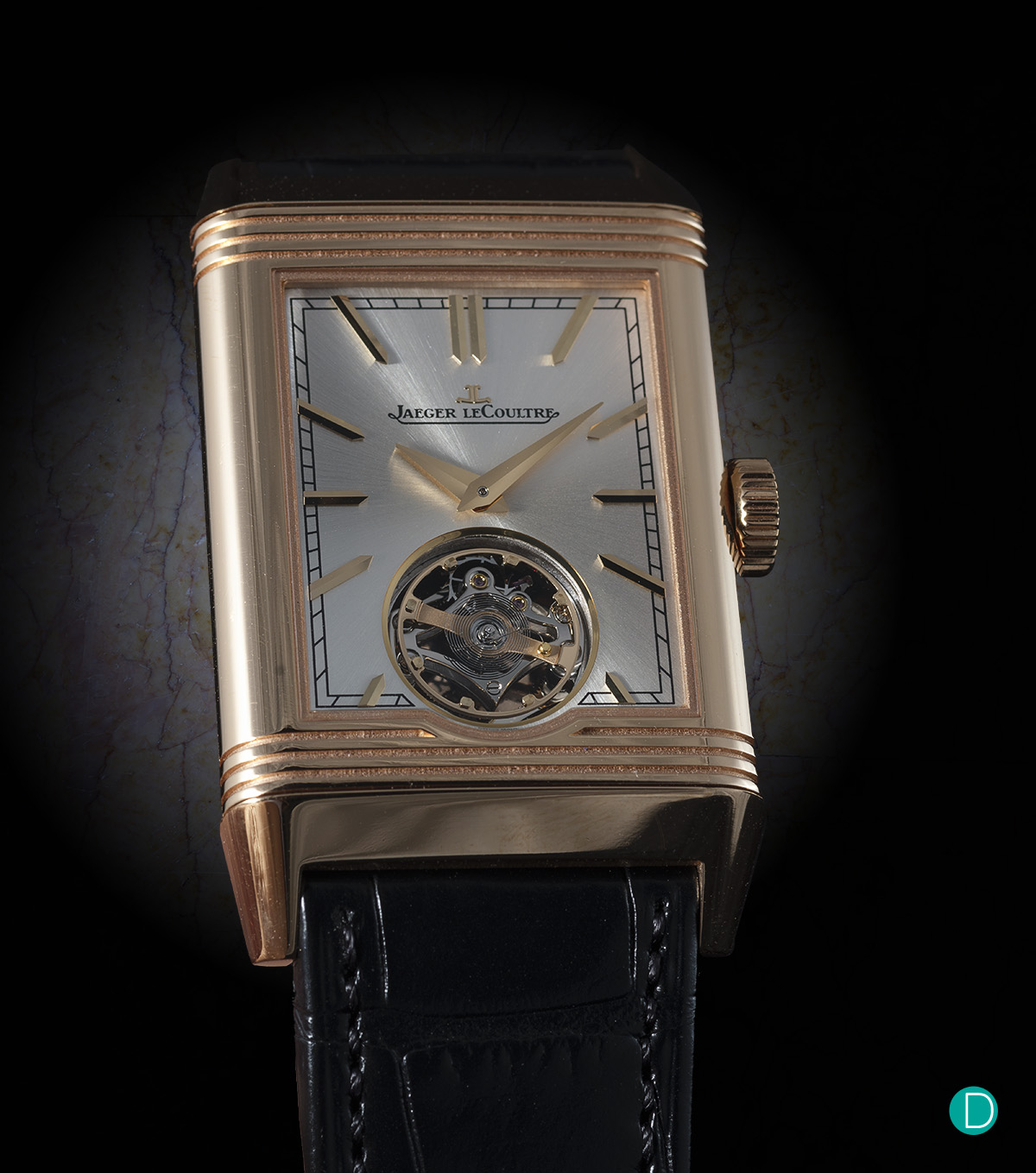
The front dial of the Reverso Tribute Duoface Tourbillon projects an image of elegance. Capturing the spirit of the early 1930s models, the dial is fitted with dauphine hands and framed by a chemin de fer or railroad minute track. These understated elements, along with the classical silver sunray-brushed front dial, allow the toubillon to take centre stage. A mirror-polished disc on the cradle that houses the case is precisely aligned such that light is reflected back through the sapphire crystal and tourbillon to further illuminate the mechanism.
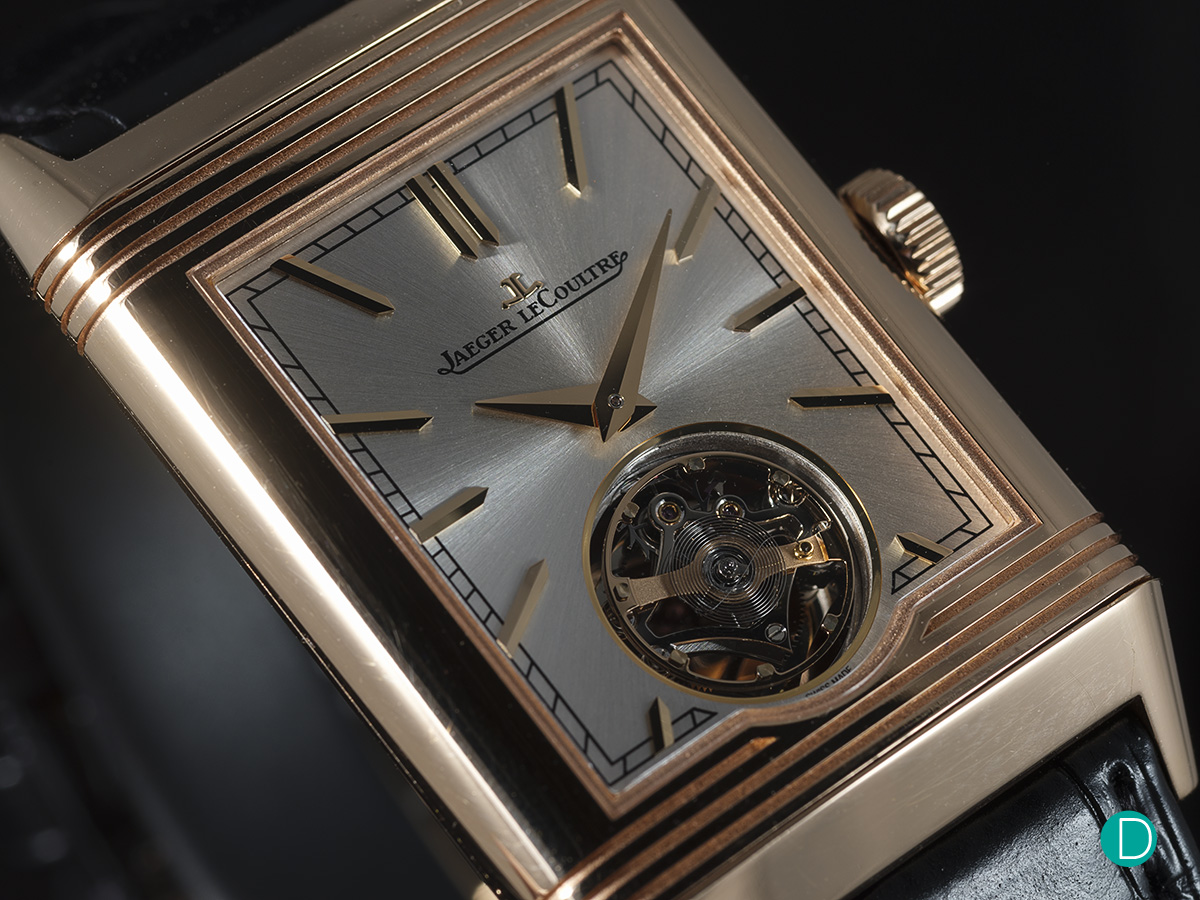
On the flipside, a bolder visage is on display. The reverse dial is the Superman to the front dial’s mild-mannered Clark Kent. With most of the handiwork coming from the manufacture’s Métiers Rares® workshop, you can bet it’s gonna be a doozy. The dial is partially openworked, revealing the richly decorated movement behind it. The second time zone is indicated by the same golden Dauphine hands and indices but this time set on a black sunray-brushed sub-dial. A more technical view of the tourbillon can be appreciated on this side of the dial. It also doubles as a seconds counter as it makes a full rotation every minute. At the 2 o’clock position, just outboard of the second time zone sub-dial, is a rotating disc with a stylised sun and moon on either half of the circle. Together with the red pointer at the corner, it functions as the day/night display, with the sun depicting daytime and the moon depicting nighttime.
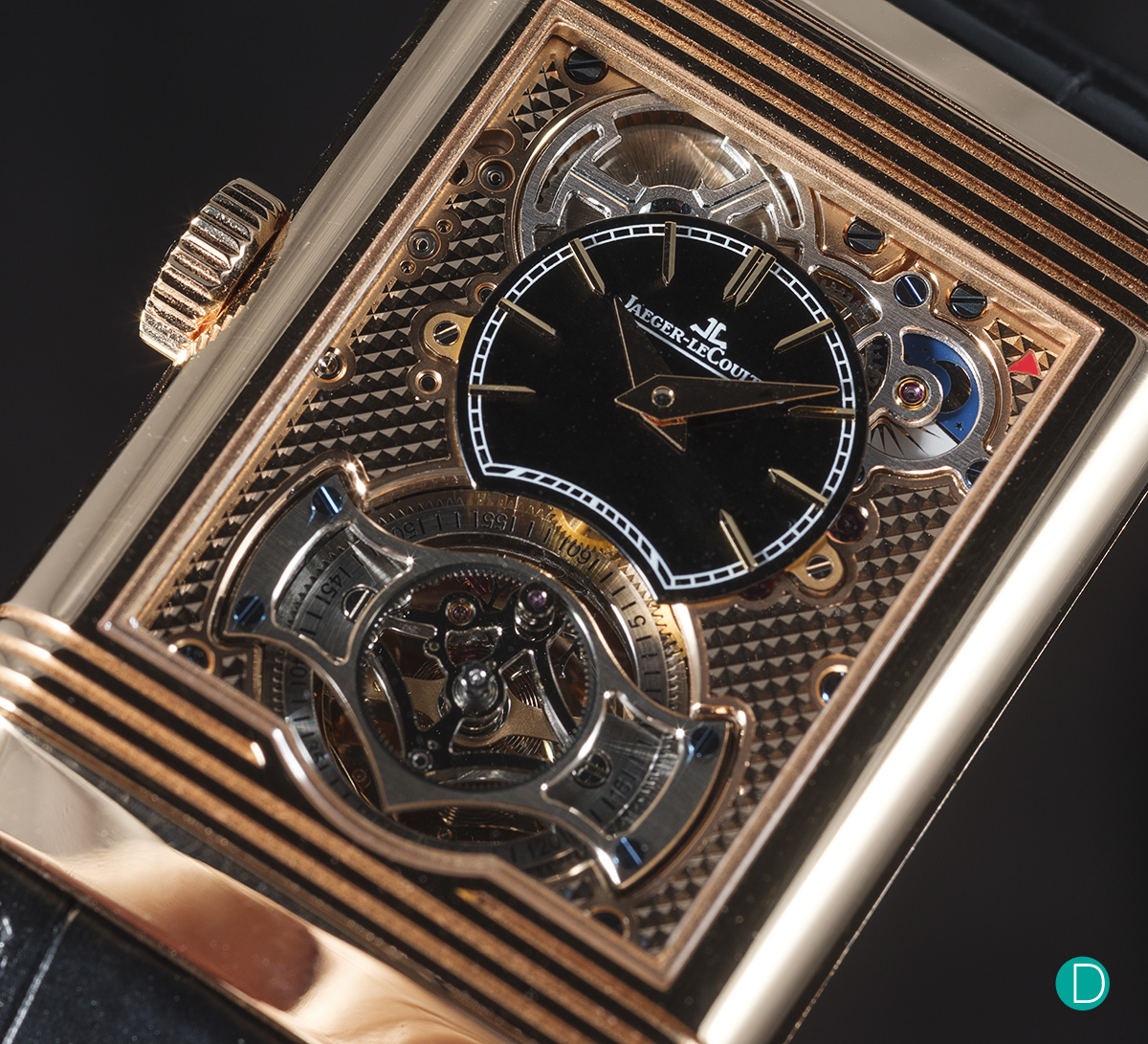
The Movement
Driving the Reverso Tribute Duoface Tourbillon is the 31-jewel, 254-part Calibre 847. In spite of housing a tourbillon and being ‘duoface’, the movement is only 3.9 mm thick. Plenty of ingenuity went into reducing the height of the tourbillon. Apart from getting rid of the upper bridge, the outer tourbillon cage was also replaced with a ball-bearing system. Normally, the hairspring would be attached to the outer tourbillon cage; in its absence, a different kind of hairspring is required. Jaeger-LeCoultre invented and patented a unique S-shaped hairspring where one end is attached to a fixed point at the centre of the tourbillon mechanism and the other end affixed to the balance wheel. The tourbillon in its entirety consists of 62 components and weighs only 0.455 grams. With limited space for the mainspring and the inclusion of a power-hungry complication, it is perhaps unsurprising that the Reverso Tribute Duoface Tourbillon only has a power reserve of 38 hours even while operating at a stately 3 Hz frequency.
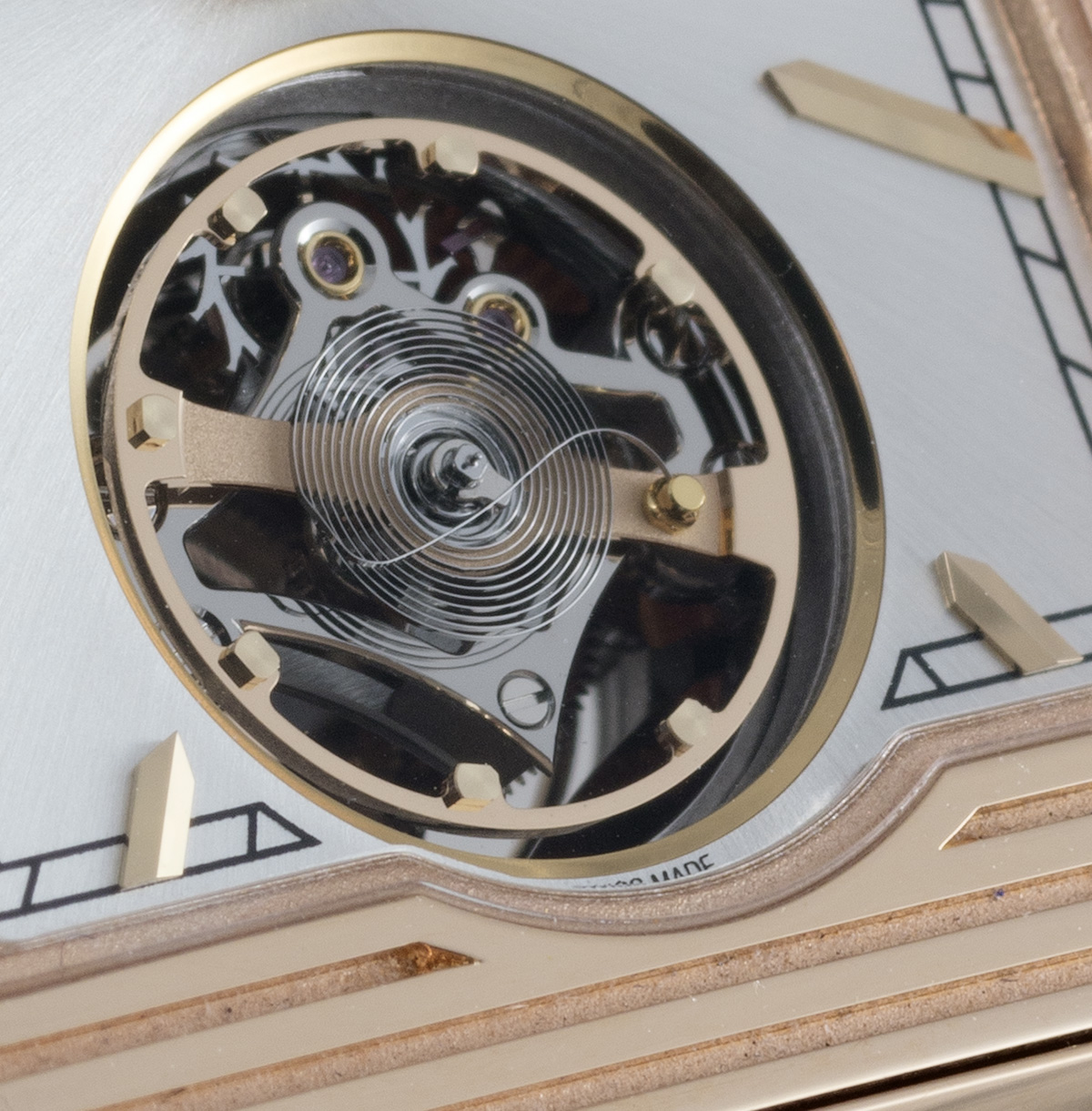
Form and function always go hand-in-hand at Jaeger-LeCoultre and the Calibre 847 is no exception. Tourbillon aside, the most striking aspect of the new Reverso Tribute Duoface Tourbillon is its gold bridges. Reminiscent of the original 1993 Reverso Tourbillon, Jaeger-LeCoultre takes it a step further here by adorning these bridges with Clous de Paris guilloché. It takes six hours of handiwork to apply the guillochage using a century-old lathe. Hobnailing aside, all the partial openworking and beveling is also executed by the Métiers Rares® workshop. Numerous outward angles adorn the edges of the bridges, although no inward angles are present. The heat-blued screws used to secure these bridges add a beautiful pop of colour and complement the pink gold bridges to a tee. It goes without saying, the Calibre 847 – specifically for the pink gold Reverso Tribute Duoface Tourbillon – is ranks high as one of the most ornate Reverso movements ever by Jaeger-LeCoultre.
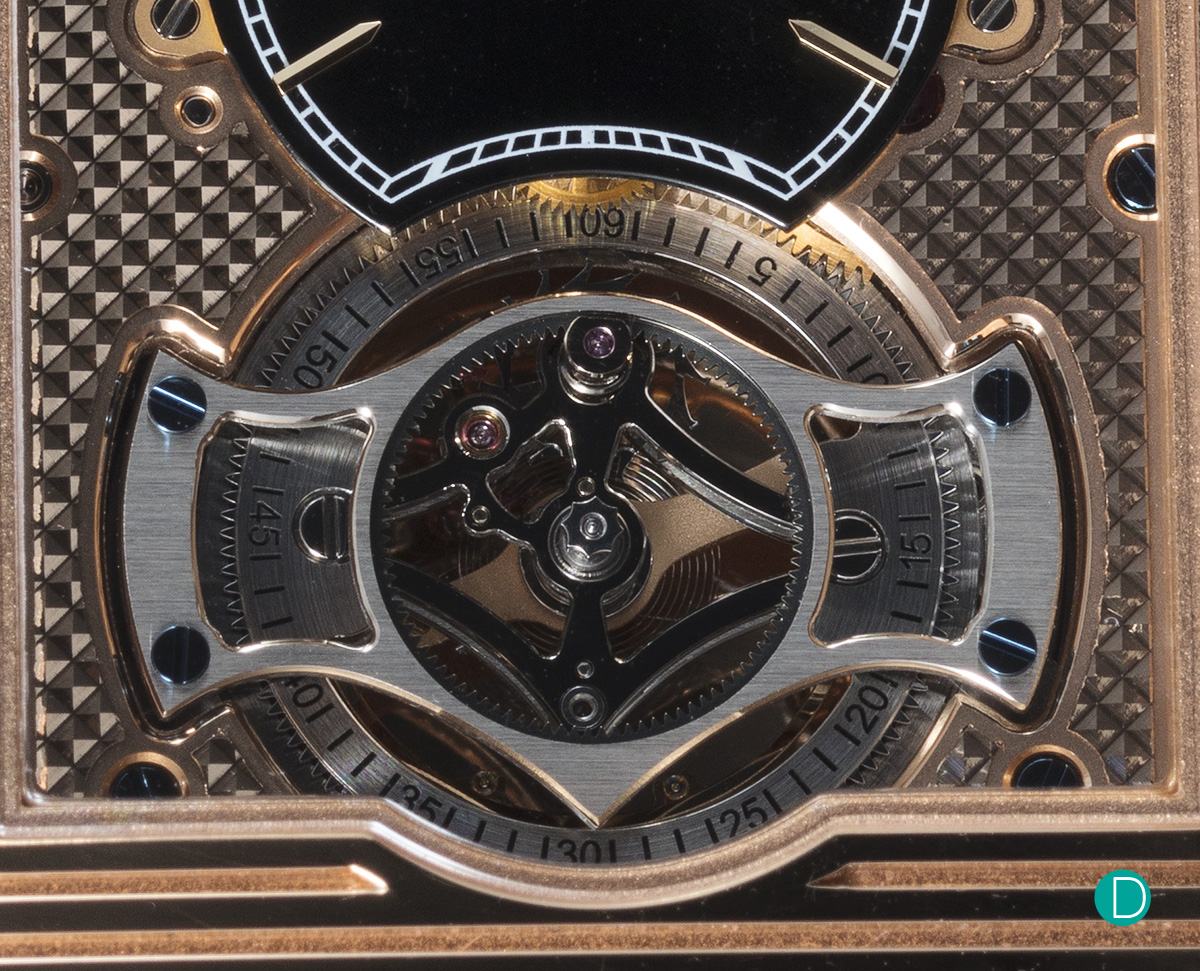
The Competitive Landscape
Tourbillons are virtually a dime a dozen these days, but the quality ones are still relatively far and few in between, especially ones in non-round cases. This is what makes the Reverso Tribute Duoface Tourbillon – in all its rectangular, swiveling glory – stand out. The ability to conveniently view both sides of the tourbillon on the wrist largely remains a Reverso thing. With the Reverso Tribute Duoface Tourbillon, you have elegance and class on one side, and a craftsman’s sandbox on the other. Interestingly, despite being a commemorative model, there is no news yet of the Reverso Tribute Duoface Tourbillon in pink gold being a limited edition release. Nevertheless, it’s steep price tag of USD139,000 means that only a lucky handful will be able to call this work of art their own.
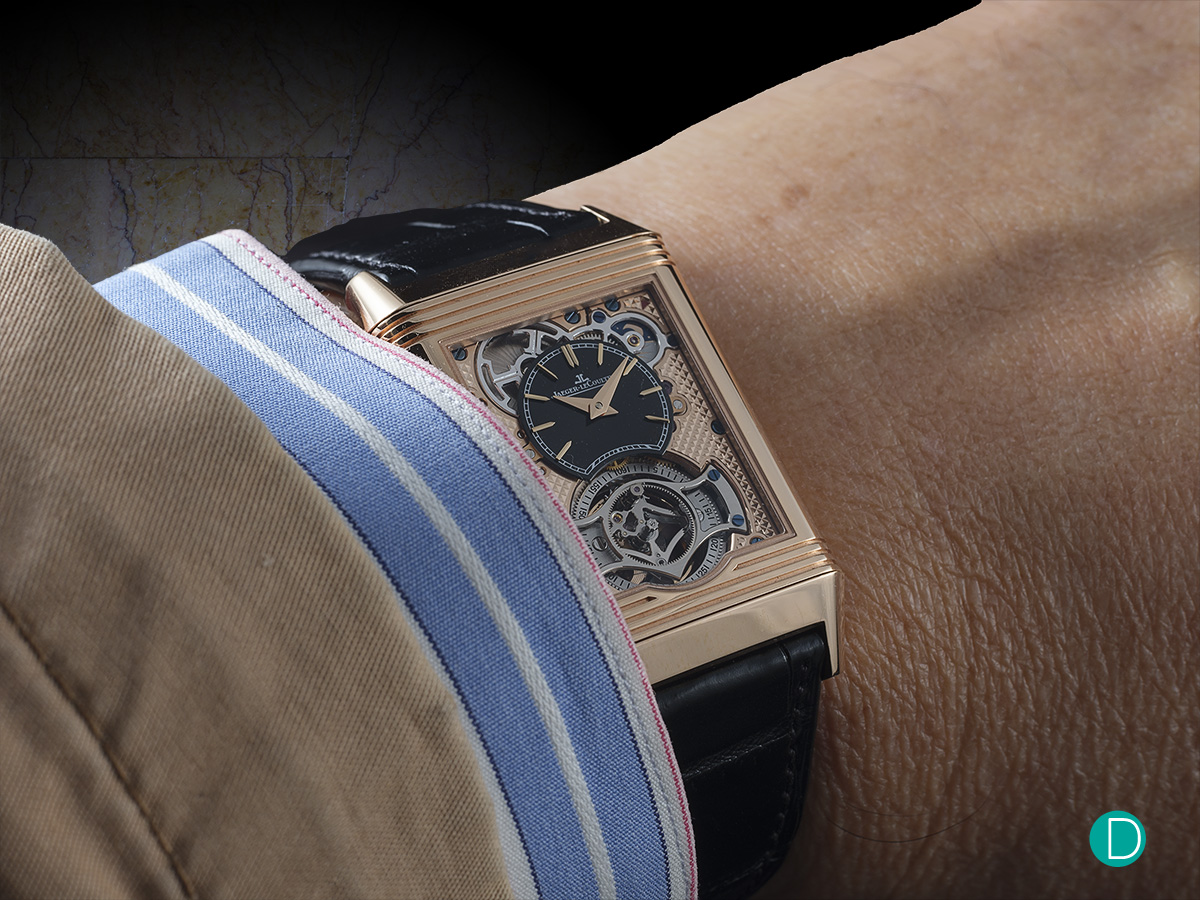
The closest alternative there is to the Reverso Tribute Duoface Tourbillon in pink gold is none other than its platinum sibling. Released in 2018 to celebrate the brand’s 185th birthday, the original platinum variant is identical to the pink gold in all ways except for the material used, dial colour/treatment, as well as the treatment of the movement bridges. The platinum version features a blue dial in front, an eggshell dial on the reverse side, and bridges decorated with a sunray pattern emanating from the tourbillon as the centre. Compared to the new pink gold Reverso Tribute Duoface Tourbillon, it is stealthier, though not in the absolute sense as the watch is still mighty assertive on the wrist. Finding one on the wrist will, in turn, be like finding a needle in a haystack; the Reverso Tribute Duoface Tourbillon in platinum is limited to 50 pieces only and was priced at USD123,000 when it debuted. Yes, the pink gold version costs more on release than the platinum version but it makes sense when you take into account six years of inflation, economic turmoil, and the additional work gone into the engraving of the pink gold bridges.
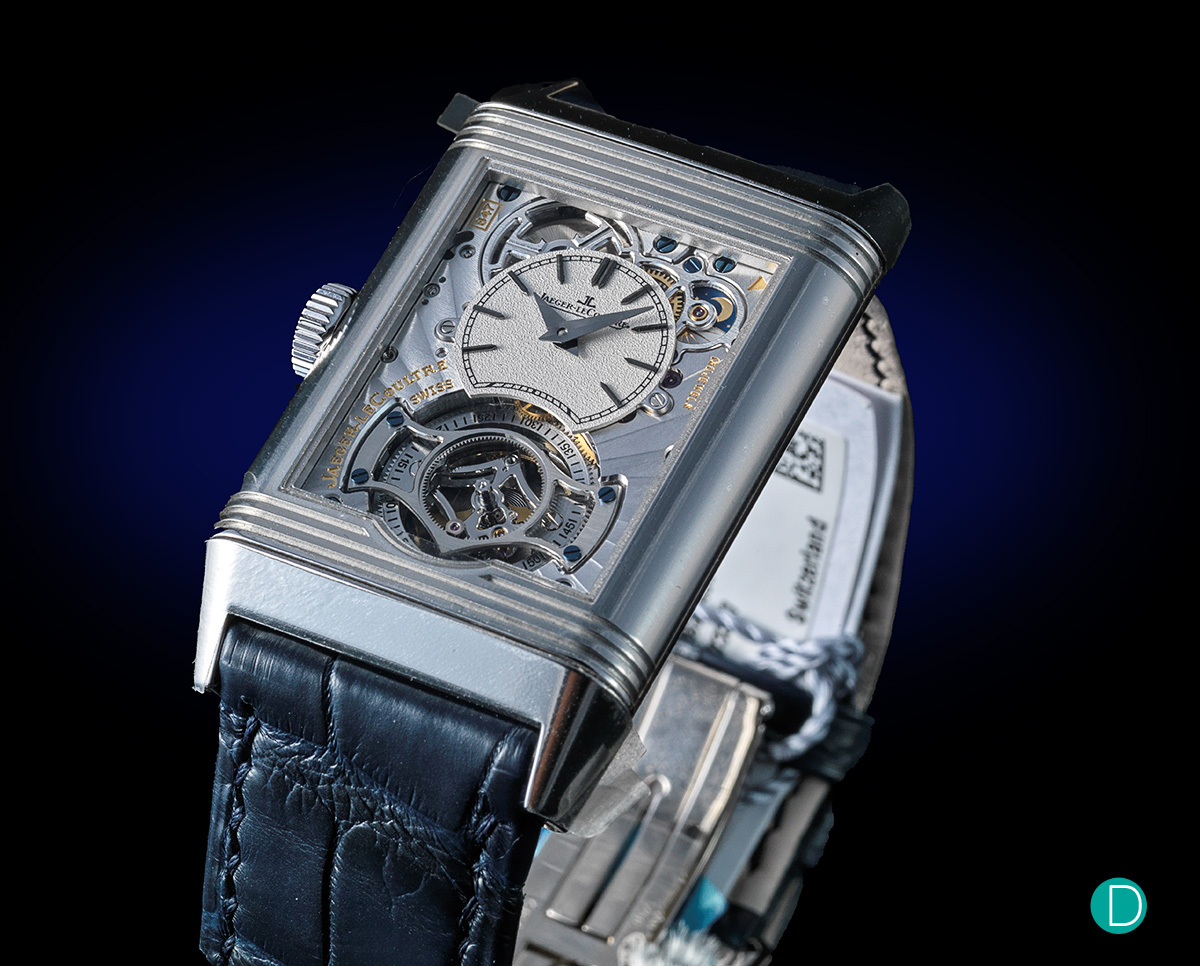
For something a little more niche and artisanal, look no further than the Lang & Heyne Anton. Aesthetics is the word here as the watch features a luscious white enamel dial and a huge flying tourbillon with lyre-shaped cage. The Georg aside, the Anton is the only model from Lang & Heyne’s portfolio with a rectangular case. But like all the other Lang & Heyne models, the Anton is fitted with three lugs – a signature design of the brand. Flip the watch over and you’ll be greeted by a movement most decadent. Its clean, open design is the result of a lack of bridges. Instead, Lang & Heyne opts for mirror polished cocks. Other highlights of the movement (really, what isn’t a highlight?) include the mirror polished tourbillon cage, the double snailed ratchet wheel, and the rose gold main plate. It’s doesn’t swivel like the Reverso, but the world-beating craftsmanship devoted to creating each and every Anton more than makes up for it. Price at EUR86,100 when it was first introduced, the Anton – while a pricey proposition – proves to be more than worthy of consideration.
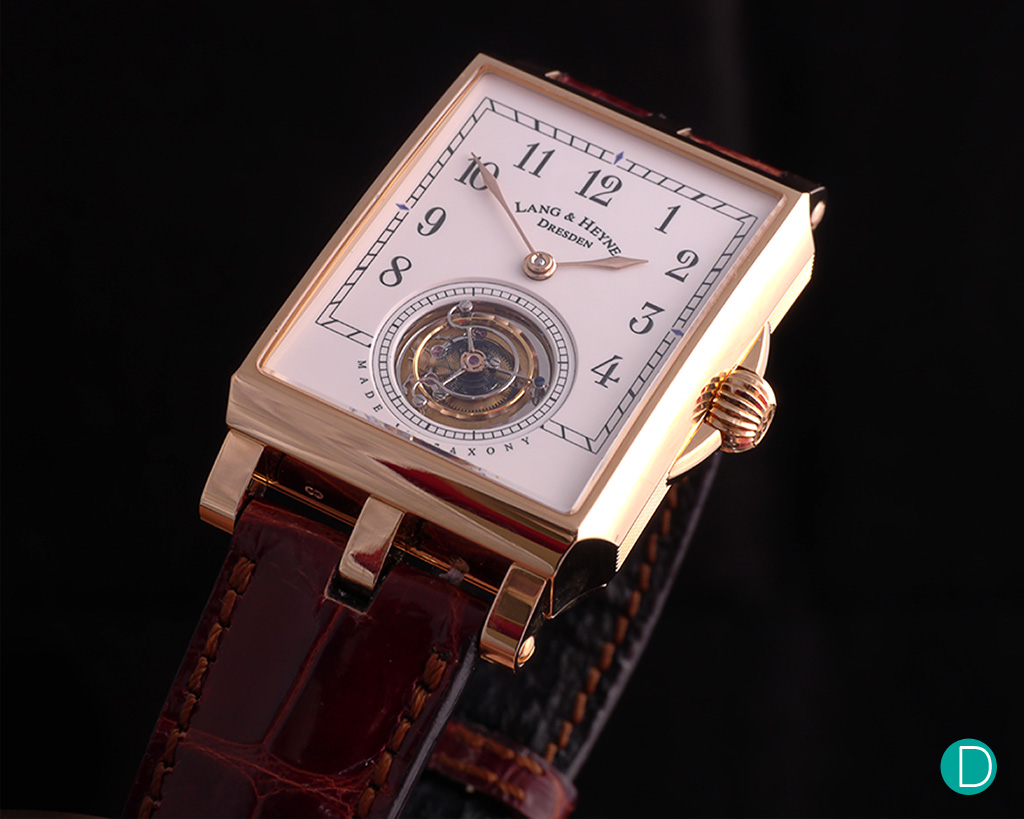
Final Thoughts
Between the excellent craftsmanship and versatility, there is plenty to love about the Reverso Tribute Duoface Tourbillon in pink gold. It is quintessentially Jaeger-LeCoultre with all the typical design cues of the Reverso that we all know and love. The Reverso has come so far since its inception almost a hundred years ago. The Tribute Duoface Tourbillon isn’t even the craziest Reverso ever made but it is a well-rounded people pleaser, easily putting a smile on the purist, the modernist, the connoisseur, and above all, the watch enthusiast.

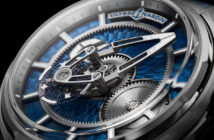


1 Comment
Pingback: Review: The New Reverso Tribute Duoface Tourbillon in Rose Gold – Horopedia.ch